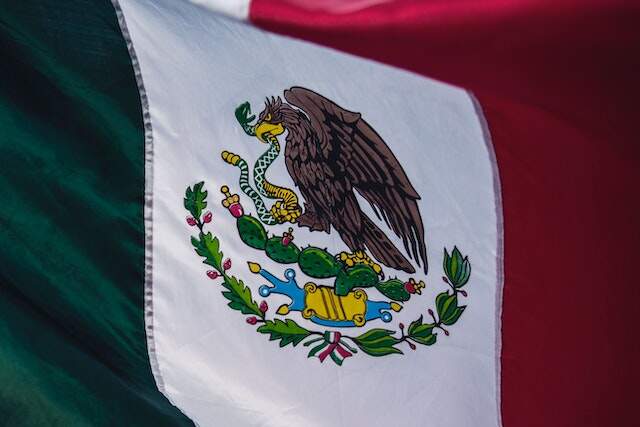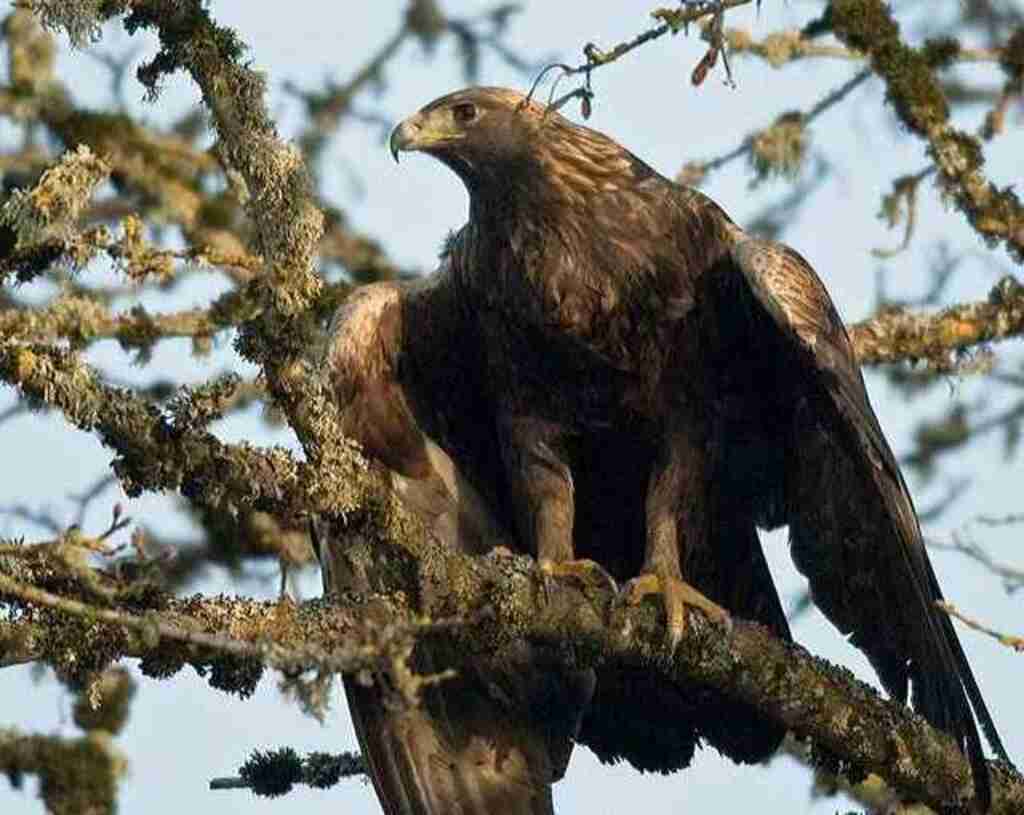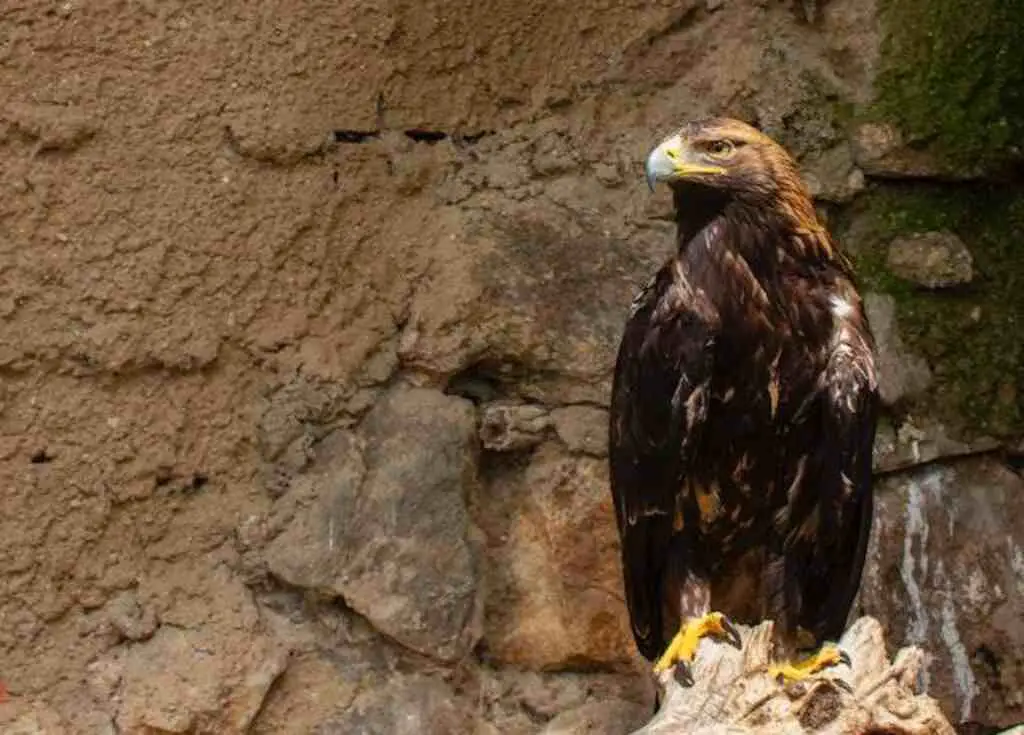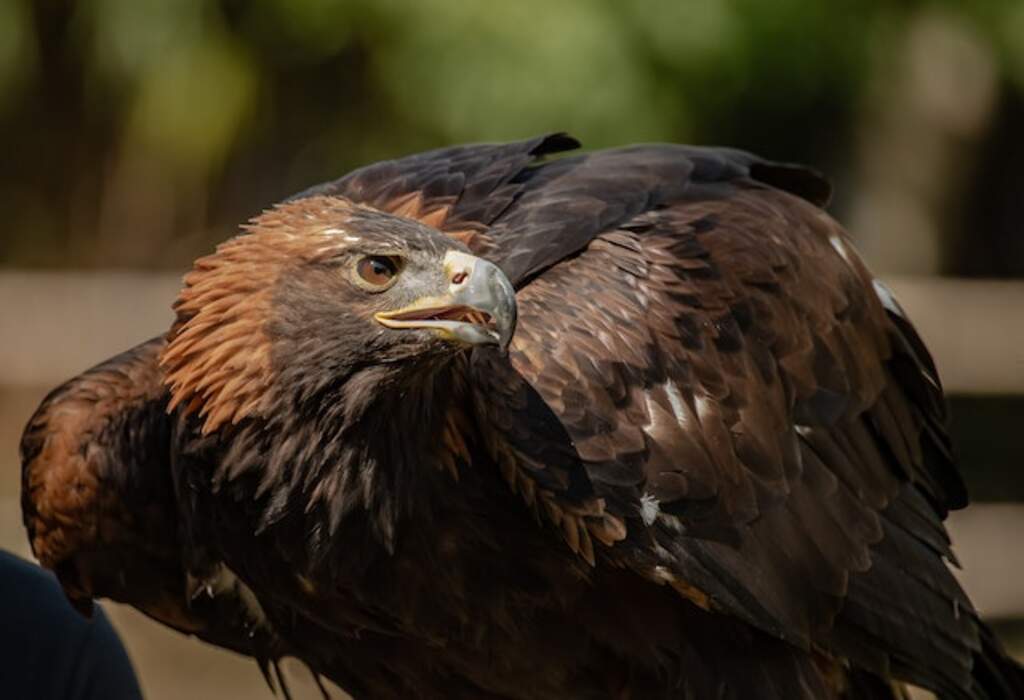In Mexico, the eagle on the national flag holds immense significance, embodying the country’s spirit and identity. Delving into Mexican culture, history, and mythology, we find it’s the majestic Golden Eagle that graces the flag.
Revered in ancient Aztec beliefs for its strength and divinity, this regal bird symbolizes power and resilience. From art to literature, the Golden Eagle is omnipresent, representing freedom and liberty.
So, which eagle is on the Mexican flag? Join us as we unravel its captivating journey through Mexican culture, exploring the enduring allure and inspiration it brings to the nation.
Table of Contents
- 1 Key Takeaways
- 2 Which Eagle Is On The Mexican Flag
- 3 The Symbolism of the Golden Eagle in Mexican Culture
- 4 The History of the Mexican Flag and Its Eagle Emblem
- 5 The Distinctive Features of the Golden Eagle
- 6 The Significance of the Golden Eagle in Aztec Mythology
- 7 The Role of the Golden Eagle in Mexican National Identity
- 8 The Difference Between the Golden Eagle and the Bald Eagle
- 9 The Conservation Efforts for the Golden Eagle in Mexico
- 10 The Golden Eagle in Mexican Art and Literature
- 11 The Golden Eagle in Mexican Sports and Entertainment
- 12 The Golden Eagle as a Symbol of Power and Strength
- 13 The Golden Eagle’s Presence in Mexican Landscapes and Wildlife
- 14 Conclusion
- 15 Frequently Asked Questions
- 15.1 How many different species of eagles are found in Mexico?
- 15.2 What is the scientific name of the golden eagle found on the Mexican flag?
- 15.3 Are there any other countries that have the golden eagle as a national symbol?
- 15.4 How did the golden eagle become a symbol of power and strength in Mexican culture?
- 15.5 What is the significance of the golden eagle in Mexican mythology and folklore?
- 16 Author
Key Takeaways
- The eagle on the Mexican flag represents the sun god Huitzilopochtli and signifies strength and protection.
- The current design of the Mexican flag features an eagle perched on a prickly pear cactus, devouring a snake.
- The Golden Eagle plays a prominent role in Mexican folklore as a protector and guide for warriors.
- The presence of the Golden Eagle in Mexican national identity symbolizes strength, power, nobility, and resilience.

Which Eagle Is On The Mexican Flag
The Golden Eagle is on the Mexican flag. It is a symbol of strength, power, and resilience, rooted in ancient Aztec mythology.
Representing Mexico’s identity, the eagle embodies freedom and liberty, found not only on the flag but also in Mexican art, literature, and culture.
The Symbolism of the Golden Eagle in Mexican Culture
The Golden eagle holds significant symbolic value in Mexican culture due to its representation on the Mexican flag. The eagle is a prominent figure in Mexican folklore and has long been regarded as a symbol of power, courage, and freedom.
In ancient Aztec mythology, the eagle was believed to be a representation of the sun god Huitzilopochtli, and its presence signified strength and protection.
The significance of the golden eagle in Mexican history can be traced back to the founding of Tenochtitlan, the ancient capital of the Aztec Empire.
According to legend, the Aztecs were guided by a prophecy that instructed them to settle in a place where they would see an eagle perched on a cactus, devouring a serpent.
This iconic image is now depicted on the Mexican flag as a reminder of the country’s rich cultural heritage and its struggle for independence.
Transitioning to the subsequent section, the history of the Mexican flag and its eagle emblem reveals a deeper understanding of the flag’s significance.
The History of the Mexican Flag and Its Eagle Emblem
Symbolizing the rich history and heritage of Mexico, the national emblem adorning the country’s banner represents a powerful and enduring legacy.
The eagle depicted on the Mexican flag holds great significance, rooted in the symbolism of the eagle in ancient civilizations.
The eagle has long been revered as a symbol of power, courage, and freedom, qualities that resonate deeply with the Mexican people.
Throughout history, the design of the Mexican flag has evolved, with various iterations featuring different depictions and positions of the eagle.
However, the current design, adopted in 1968, showcases an eagle perched on a prickly pear cactus, devouring a snake.
This iconic image represents the triumph of good over evil and reflects the resilience and determination of the Mexican nation.
Transitioning into the subsequent section about ‘the distinctive features of the golden eagle,’ this emblematic bird embodies the spirit of Mexico in its majestic presence.

The Distinctive Features of the Golden Eagle
Characterized by its majestic wingspan and regal demeanor, the golden eagle possesses distinctive features that make it a formidable predator in the avian world.
- Sharp Beak: The golden eagle’s beak is strong and curved, allowing it to tear through flesh with ease.
- Powerful Talons: Its talons are long and sharp, enabling it to grasp and immobilize its prey.
- Keen Eyesight: The golden eagle has exceptional visual acuity, allowing it to spot prey from great distances.
- Agile Flight: With its broad wings and strong muscles, the golden eagle is capable of swift and precise aerial maneuvers.
These characteristics of the golden eagle hold great symbolism in various cultures, representing strength, power, and freedom.
In Aztec mythology, the golden eagle was revered as a sacred creature, believed to be a manifestation of the sun god Huitzilopochtli.
Its significance in Aztec culture will be explored further in the subsequent section, highlighting its role as a symbol of divinity and national pride.
The Significance of the Golden Eagle in Aztec Mythology
Representing a celestial force akin to the sun’s radiance, the golden eagle in Aztec mythology soars through the heavens like a vibrant flame, embodying divinity and inspiring national pride.
In Aztec religion, the golden eagle held great significance as a symbol of power, courage, and strength.
It was believed to be the earthly representative of the god Huitzilopochtli, the Aztec god of the sun and war.
The golden eagle’s association with Huitzilopochtli made it a revered creature in Aztec culture, and its image was often depicted in religious rituals and ceremonies.
Furthermore, the golden eagle played a prominent role in Mexican folklore, where it was seen as a protector and guide for warriors.
Its majestic presence and association with bravery made it a powerful symbol of national identity, embodying the ideals of freedom and resilience.
The role of the golden eagle in Mexican national identity will be explored in the subsequent section.
The Role of the Golden Eagle in Mexican National Identity
The presence of the golden eagle in Aztec mythology and its subsequent incorporation into Mexican national identity evokes a deep sense of pride and resilience among the people, embodying the indomitable spirit of a nation that has overcome countless challenges throughout its history.
The golden eagle holds a symbolic representation of strength, power, and nobility, characteristics that have become ingrained in the Mexican cultural consciousness.
It is a testament to the rich and vibrant history of the Aztec civilization, reminding the Mexican people of their ancestral roots and the greatness that once thrived on their land.
Furthermore, the golden eagle serves as a cultural signifier, representing the unity and collective identity of the Mexican nation.
Its presence on the Mexican flag reinforces the shared values and aspirations of the Mexican people, fostering a sense of belonging and solidarity.
Transitioning to the subsequent section, it is important to understand the difference between the golden eagle and the bald eagle.

The Difference Between the Golden Eagle and the Bald Eagle
Distinctive physical characteristics and habitat preferences set apart the golden eagle and the bald eagle, two majestic avian species with significant cultural and symbolic importance.
The golden eagle, known as Aquila chrysaetos, is characterized by its brown feathers, golden nape, and large size, with a wingspan measuring up to seven feet.
It is predominantly found in mountainous regions and open landscapes, where it builds its nests on cliffs.
On the other hand, the bald eagle, scientifically known as Haliaeetus leucocephalus, is known for its distinctive white head and tail feathers, contrasting with its dark brown body.
It is primarily found near bodies of water, such as lakes and rivers, where it hunts fish and builds nests in tall trees.
Understanding the differences between these two species is essential for comprehending the symbolism of eagles and their cultural significance.
Transitioning into the subsequent section about the conservation efforts for the golden eagle in Mexico emphasizes the importance of protecting this iconic species.
The Conservation Efforts for the Golden Eagle in Mexico
Efforts to conserve the golden eagle in Mexico have been implemented in order to protect the species and preserve its habitat.
The conservation challenges faced by the golden eagle in Mexico include habitat loss, illegal hunting, and electrocution from power lines.
The population status of the golden eagle in Mexico is listed as threatened (En Peligro de extincion), with an estimated population of around 600 pairs.
Conservation organizations and government agencies have been working together to address these challenges and protect the golden eagle.
These efforts include the establishment of protected areas, the implementation of anti-poaching measures, and the promotion of sustainable land use practices.
Despite these efforts, ongoing monitoring and conservation actions are necessary to ensure the long-term survival of the golden eagle in Mexico.
Transitioning to the subsequent section about the golden eagle in Mexican art and literature, the cultural significance of this majestic bird is evident in various artistic expressions.

The Golden Eagle in Mexican Art and Literature
Depicted in various forms of artistic expression, the golden eagle holds a prominent place in the cultural heritage of Mexico.
Symbolism in golden eagle artwork is prevalent, with the majestic bird representing power, strength, and bravery.
The golden eagle is often portrayed with its wings spread wide, symbolizing freedom and independence.
In Mexican literature, the golden eagle is frequently used as a metaphor for national identity and resilience, showcasing the enduring spirit of the Mexican people.
Its significance in literature reflects the deep connection between the bird and the country’s history and values.
Transitioning to the subsequent section about the golden eagle in Mexican sports and entertainment, this iconic bird continues to captivate audiences and play a significant role in various aspects of Mexican culture.
The Golden Eagle in Mexican Sports and Entertainment
Renowned for its captivating presence, the golden eagle in Mexican sports and entertainment has become an emblematic symbol that resonates with the passion and fervor of the nation.
In Mexican music, the golden eagle is frequently referenced and celebrated, symbolizing the indomitable spirit and pride of the Mexican people.
It is often depicted in album covers, music videos, and stage performances, adding a powerful visual element to the lyrics and melodies.
Similarly, in Mexican fashion, the golden eagle is a popular motif, adorning clothing, accessories, and even tattoos.
Its regal and majestic qualities are embraced by fashion designers and consumers alike, representing a sense of national identity and unity.
Transitioning into the subsequent section about the golden eagle as a symbol of power and strength, it is evident that this iconic bird holds a significant place in Mexican culture across various domains.
The Golden Eagle as a Symbol of Power and Strength
The Golden Eagle holds immense symbolic representation and cultural significance in Mexican society. As mentioned previously, it is a prominent figure in Mexican sports and entertainment, representing power, agility, and strength.
Beyond that, the Golden Eagle is revered as a national symbol of Mexico, embodying the nation’s identity and values. Its majestic presence on the Mexican flag further exemplifies its significance.
This revered bird symbolizes the freedom and resilience of the Mexican people, reminding them of their rich heritage and the sacrifices made for their country.
The Golden Eagle’s association with power and strength also extends to its portrayal in Mexican art and literature.
It serves as a source of inspiration for artists and writers, capturing the essence of Mexico’s natural beauty and the indomitable spirit of its people.
Transitioning seamlessly into the subsequent section, the Golden Eagle’s presence in Mexican landscapes and wildlife further exemplifies its integral role in the nation’s identity.

The Golden Eagle’s Presence in Mexican Landscapes and Wildlife
An integral part of Mexico’s landscapes and wildlife, the Golden Eagle soars majestically through the sky, its presence evoking a sense of awe and wonder.
This iconic bird is not only a symbol of power and strength but also plays a crucial role in maintaining the ecological balance of Mexican ecosystems.
The golden eagle population in Mexico has faced challenges due to habitat loss, primarily caused by human activities such as deforestation and urbanization.
These factors have led to a decline in suitable nesting sites and prey availability for the golden eagles.
Efforts are being made to conserve their habitats and protect their population through initiatives like protected areas and reforestation programs.
It is vital to ensure the preservation of these majestic creatures to maintain the biodiversity and natural beauty of Mexico’s landscapes.
| Golden Eagle Facts | Habitat | Conservation Efforts |
|---|---|---|
| The golden eagle is one of the largest birds of prey in North America. It has a wingspan of up to 7.5 feet and can weigh up to 15 pounds. | Golden eagles are found in various habitats, including mountains, deserts, and grasslands. They prefer areas with open spaces for hunting and nesting sites on cliffs or tall trees. | To protect the golden eagle population, conservation organizations are working on habitat restoration, reducing human disturbance, and promoting public awareness about the importance of their conservation. |
Conclusion
In conclusion, the majestic Golden Eagle graces the Mexican flag, symbolizing strength, power, and resilience deeply rooted in ancient Aztec mythology.
This regal bird embodies the spirit and identity of Mexico, representing freedom and liberty.
With its widespread presence in Mexican art, literature, and culture, the Golden Eagle remains an enduring emblem of the nation’s pride and endurance.
Its captivating journey through Mexican heritage continues to inspire and captivate, making it an iconic and cherished national symbol.

Frequently Asked Questions
How many different species of eagles are found in Mexico?
Mexico is home to a rich diversity of eagle species, with the exact number varying depending on taxonomic classification. Conservation efforts for Mexican eagles have focused on protecting their habitats, reducing threats such as habitat loss and illegal hunting, and promoting public awareness and education.
What is the scientific name of the golden eagle found on the Mexican flag?
The scientific name of the golden eagle, which is the national symbol of Mexico, is Aquila chrysaetos. This majestic bird is widely revered for its strength, grace, and significance in Mexican culture.
Are there any other countries that have the golden eagle as a national symbol?
Golden eagles in Native American cultures hold significant spiritual and cultural value. Symbolism of eagles in ancient civilizations suggests their association with power, strength, and freedom. Several countries, including the United States and Austria, also adopt the golden eagle as a national symbol.
How did the golden eagle become a symbol of power and strength in Mexican culture?
The golden eagle has become a symbol of power and strength in Mexican culture due to its significance in Mexican mythology and folklore. It is revered for its hunting abilities and its association with the sun god Huitzilopochtli.
What is the significance of the golden eagle in Mexican mythology and folklore?
The significance of the golden eagle in Mexican mythology and folklore lies in its portrayal as a symbol of power, strength, and courage. Its cultural symbolism embodies the ideals of freedom and resilience, making it a revered emblem in Mexican culture.



